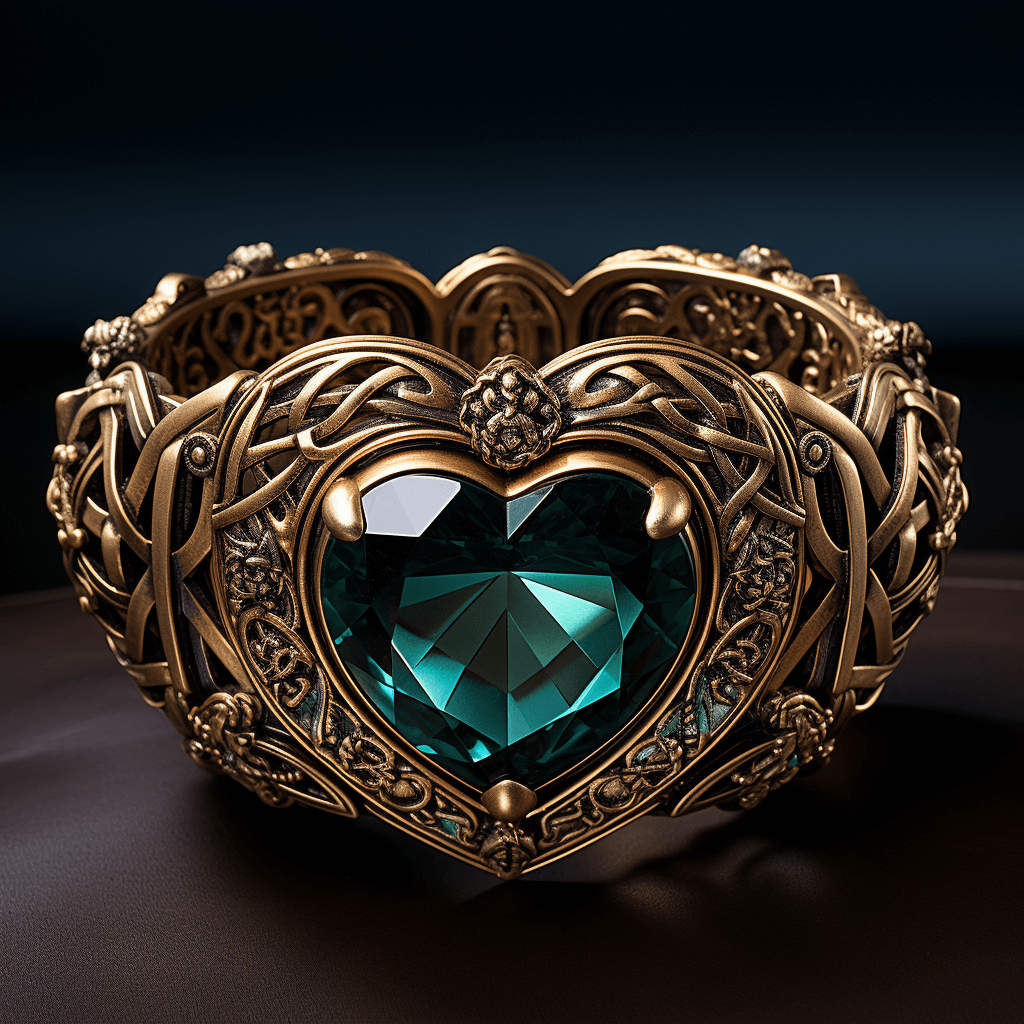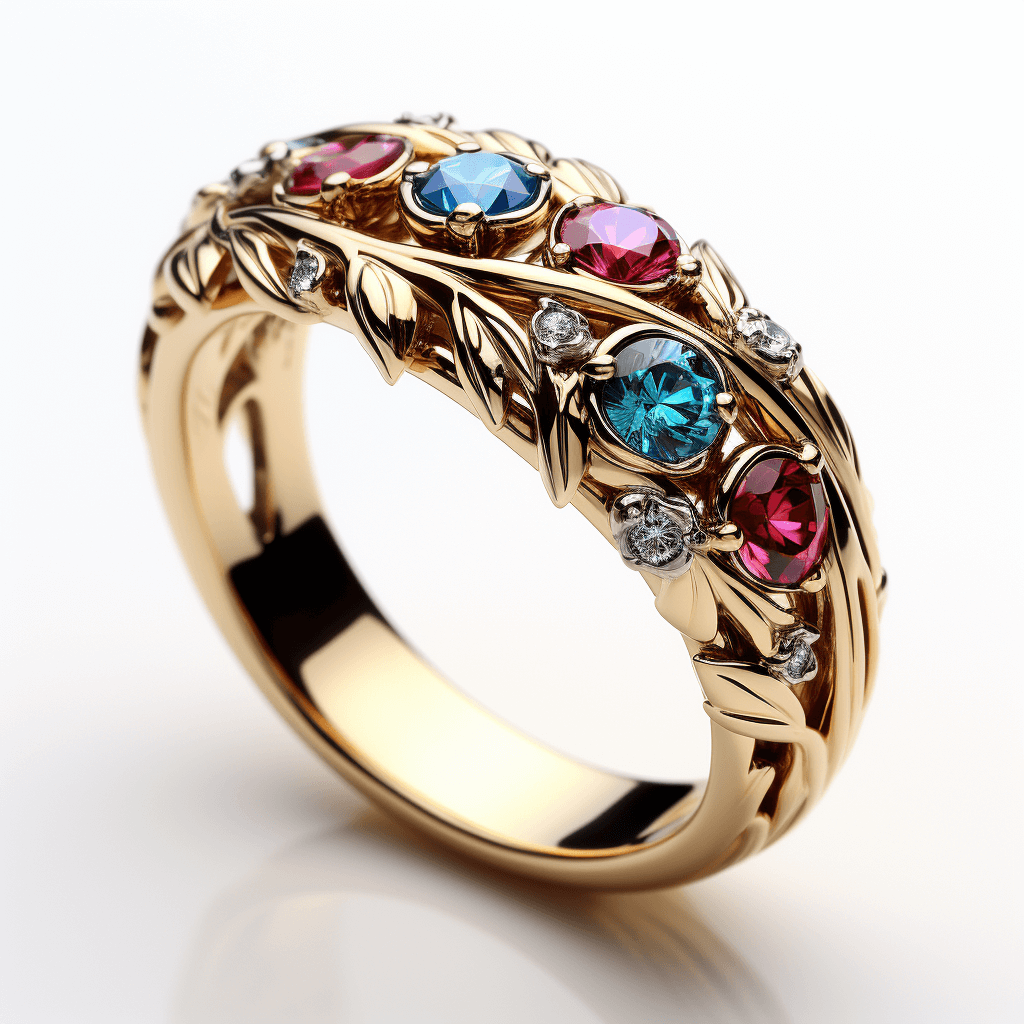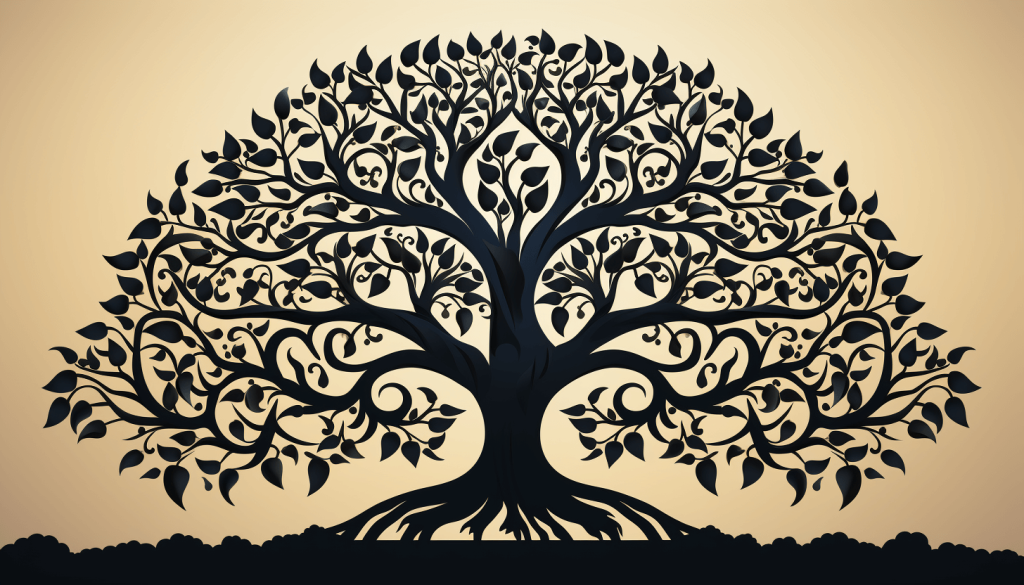Family Symbol List
If there is one that can best symbolize unity, love, and the undying connection all over the globe stemming from different cultures and history, it would be the powerful symbolism found in family. Family symbols transport people across time and space and provide them with an understanding of society’s notion of what family truly comprises.
Commonplace Family Symbols
Over the years and across cultures, there are certain symbols that have become universally tied to the family. They resonate with people everywhere making them remind of the bonds which tie one to their loved ones.
| Symbol | Description |
|---|---|
| Family Tree | A graphical representation of family members in the form of a tree, which expresses the lineage and connections between generations. |
| Heart | Often symbolizing love and affection, the heart is universally recognized as a sign for the deep emotional bonds that are within the family.|
| Intertwined Hands | This symolizes unity, support and togetherness so this symbol is a proof of the tenacity to each other in family. |
| House or Home | A house or home is supposed to be a haven for the family members that symbolizes safety, shelter, and unity. |
| Anchor | A anchor symbolizes stability and grounding, representing the idea that family keeps one steady during life’s storms.|
| Olive Branch | The olive branch, often symbolizing peace and reconciliation, thus represents harmony and understanding within a family.|
| Circle | The circle symbolizes the eternal cycle of life and the bond of family that never break, and all its unbroken and continuous shape too. |
The circle not only stands for family to most cultures but also unity, completeness, and infinity.
Symbols of the Past
History reveals that different civilizations developed symbols to represent family. The following are some of the civilization symbols and they indicate the different cultural perspective existing in the society about family.
Celtic Symbol Family
Knot work is known to be great among the Celts and so much is symbolism. The Celtic Knot was common by the Celt to symbolize family. As it denotes a continuous loop that is without start or finish, this, therefore, means eternity, loyalty and connectedness with life and generations.
Chinese Symbol For Family
The Chinese character for family is 家 (jiā). In Chinese, the family has a central position in their culture and this character does not only signify the family unit but rather the idea of home and belonging.
The Japanese Family Symbol
Family in Japanese is 家族 (kazoku). The symbol underlines togetherness and the importance of familial linkage. Culturally locked in Japan, there is much respect for parents and traditional family values.Visible Roman Symbol For Family
The Romans gave great regard to the concept of “familia” that indicated the immediate family plus the extended household. Though they had different symbols to symboolise gods and goddesses representing love and fertility, but the “Domus” (house or home) became a common representation to be used as a symbol to represent the family unit. That was a symbol of family, stability and prosperity and lineage.
Greek Symbol For Family
Viking Symbol For Family
The “Valknut” was used by the Vikings, who are renowned for their runes and symbolism, in honor of showing interconnectedness as well as the afterlife. While surely not the one falling under a family, but of their interlocking triangles can be connected in relation past and future with the presentness of a family. The Vikings placed great weight in this lineage, honor, and ties of familial.
The Slavic Symbol
The cultures of the Slavic people have very rich folklore and traditions that make use of the “Rodovoye Drevo” or the strengths and of the growth by which a family is measured. This tree, deeply rooted and branching out signifying strenght as well as the growth by which a family is measured. The “Kolovrat” or the sun wheel symbolizing the circle of life and seasons, in a similar vein, relates to continuation of generations of a family.

Irish Symbol For Family
This characteristic of the Celtic race therefore makes the Irish people in having the symbols like the Claddagh and the Celtic knot rooted deep into themselves. The Claddagh, which is the symbol of love, loyalty, and friendship, is shown by a heart that is held by two hands with a crown on it. While it is most often found in rings and symbolizes romantic love, it also pays homage to the strong bonds of family.
Hawaiian Family Symbol
The concept of Ohana is one that is looked upon within high regard in Hawaiian culture with respect to the value of family. Presented in a notorious Ohana symbol, – most of which are represented by the shape of a turtle – ‘Ohana represents the security and protection of a family. The turtle itself, designed with its safe shell encasing and long life, gives testament to the nurturing abilities of an ‘ohahu and the support that members will share across the course of each other’s lives.
Symbol of Family Norse
The rich mythology with sagas of the Norse culture often used “Yggdrasil”, that is the World Tree to actually signify the representation of everything in the universe being in fact interconnected with one another. As the limbs and roots of Yggdrasil represent the cosmos, the branches and roots can represent the connecting lines of generations between families so as to focus on the family and heritage concept.
The Italian Symbol Of Family
Italy with deep-rooted tradition and family centric culture doesn’t have a singular symbol to refer to the family. However, this “Fleur-de-lis,” originally from France has been adopted in various Italian coat of arm. Somehow, it can be associated with family sanctity that signifies purity and life. The Italian family crest or “Stemma” on the other hand usually bears some kind of symbols that represent each family’s history and blood line.
Mayan Symbol For Family
The Mayans had used a symbol for everything in life because with their intricate glyphs and deep spirituality, life needed a meaning. The “Hunab Ku” symbol had represented the center of the universe and the harmony can be associated with the unity and balance of a family. Moreover, Mayan glyphs often represented god and ancestor stories that underlined the continuity of lineage as well as ancestral affinity.
The Egyptian Context Symbolizing Family
Ancient Egypt, with their many gods and convoluted hieroglyphs, also viewed family as a fundamental basis of social life. The “Ankh,” symbolizing life can represent the continuity of family generations. Besides, the goddess Isis, often portrayed with her son Horus, is a symbol of motherhood and protector of the family, further strengthening both relationships.
Colors that Symbolize a Family
Colors have always bore deep interpretations in the human society beyond just being superficially visually appealing to incapsulate deeper meanings and emotions. In regard to family, a few of colors present love, unity, growth, stability, and which are the fundamental values and bonds that the members of a family share with one another.
Warm Colors
Warm colors, associate to sunlight and fire, tends to bring in the feelings of warmth, comfort, and excitement or importance for passion. Blending well with the very idea of bonding in a family, these tints symbolize the love, care, and energy that various members of a family share with each other.
- Red: A strong, intense color usually identifying with deep love, passion linked with emotional connection. Familiarly, it personifies the connection of members by heart and affection binding.
- Orange: Orange is the color of red combined with some yellow to display warmth, happiness and enthusiasm. Meaning it may represent warm moments and festivities within a family.
- Yellow: Its brightness symbolizes cheerfulness, happiness, and enlightenment. It reflects the light and warmth a family exudes in one’s life.
Cool Colors
Cool colors will represent the calm, trusting environment and growth hence the sky, water, and foliage used. Having been used in a family can symbolize stability that exist among members of a family whom if no one trusts the other, then there can be no continuity in growth.
- Green: Symbolizing growth, renewal, and life, the color green represents the changing dynamic of family relationships between the two characters and the sense that they are growing through adversity together.
- Blue: Gives a sense of calmness, trust, and stability – thus it stands for the strong base on which family relationship is found. It is said to express the trait of trust, loyalty, together with deep understanding among members of the family.
Colors understand a lot of influence on our emotions but the colors also have a lot of influence on us in the many cultural rituals and ceremonies that involve us as individuals and family members.
Flowers Representing Family
Flowers with their color, shape, and fragrance each has been indicators of a silent way of translating emotions, sentiments, and even messages. The same goes by when it comes to family and some flowers stand out as the representation of how love, unity, and strength make this bond complete.
Common Flowers
Most of the flowers we meet in our lifetime and use them from daily to special occasions such as weddings, have meanings that are rooted deeply into whether local or common tradition and culture. Most of the flowers offered as gifts mostly symbolize love, unity, and respect.

- Roses: Though commonly connoting the romantic love in various shades of red depending on the intensity, roses, white or yellow respectively would connote regard within family ties – love or specifically fondness or innocence. The bouquet other than being a variety of roses may further connote that even families of the same roots have varying feelings with each other.
- Lilies: Lilies have a graceful form, which combines with their gentle scent to signify purity, renewal, and transience. Their senses in the sense of family denote that a relationship between family members is all-embracing and pure.
- Sunflowers: These are tall and radiate warmth and happiness to show devotion. The bloom of these flowers can symbolically depict a reflection of the warmth and radiance one gets from one’s family.
Rare Flowers
In addition to the more familiar flowers, those less commonly known blossoms hold their own symbolism to various cultures, often with representing familial relationships and values.
- Chrysanthemum: In most Asian cultures, chrysanthemums are generally used to imply longevity and health. When it supports a symbol of family, it may not only represent the long life but also good health between the given relationship of families.
- Alstroemeria: Peruvian Lily, where the flower at the left demonstrates devotion and the one at the right represents friendship. Its intertwining and inter-locking leaves are the representation of entwined lives and mutual support of the family members.
- Forget-Me-Not: These dainty little blue flowers are a symbol of love and memories often presented to say ‘You will not be forgotten’.
Flowers have their own “language” called floriography which in time of the Victorian era was really popular. The victorians drew up floral dictionaries and each flower had its own meaning expressed through flowers.
Jewelries for Each Member of the Family
Jewelry, with its timeless appeal and value in terms of emotional investments, often surpasses its aesthetic function. For most of the general populace, these pieces become a tangible reminder of cherished moments, connections, and recollections associated with family. From the rings displaying a legacy of ages to the lockets containing cherished memories of bygone days, jewelry is a tribute and symbol to the foundation of a family.
Historically, jewellery was not only meant for adornments but also served in beliefs or otherwise as amulets, talismans and symbols of status. Family related jewellery often had protective and symbolic meanings to ensure well-being and unity of the family as depicted through studies.
Family Rings

Family rings are not just plain as some pieces worn as ornaments. They symbolize a lineage, the bond of family, and families oftentimes have them handed down through generations. Most of these family rings are engraved with family crests signifying honor and heritage. Others may include birthstones incorporating each stone as a member of the family, portraying a colorful mosaic as to describe a family journey.
Lockets
Lockets with their secret compartments are highly valued since time immemorial in so much that they hold precious memories safely. These pieces include a loved one’s photograph, a lock of hair, or a tiny note. They epitomize the bond shared within a family. Worn close to the heart, they denote an amalgamation of love and memories that cradle a family.
Bracelets
Bracelets, more so the charm ones, are uniquely symbolic to the family. Every piece of charm either a small shoe to symbolize a newborn baby or a heart to show love for one’s spouse has a story behind it. As new memories are made and milestones reached, other pendants can be added to make it a living testament of a family’s journey together.
Pendants
Pendants, with a variety of designs thereof, make for another popular way to represent family. Tree designs that utilize branches for the names of different family members are one of the most popular types of jewelry. Also though, pendants with the names of all the family members or other doodads may be utilized, thus creating a personalized piece of jewelry full of meaning and emotions.

